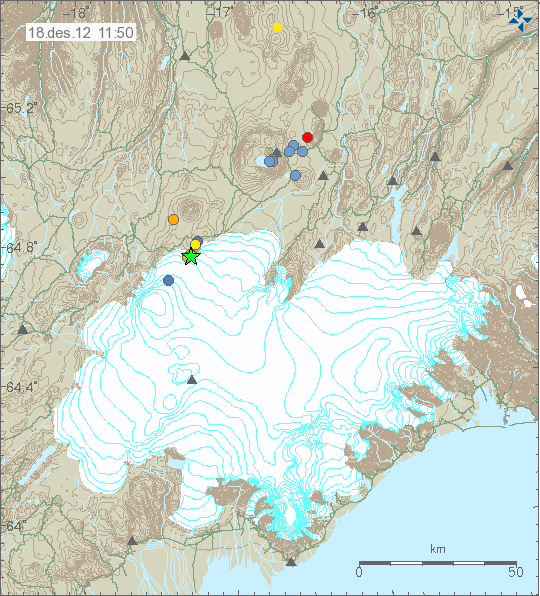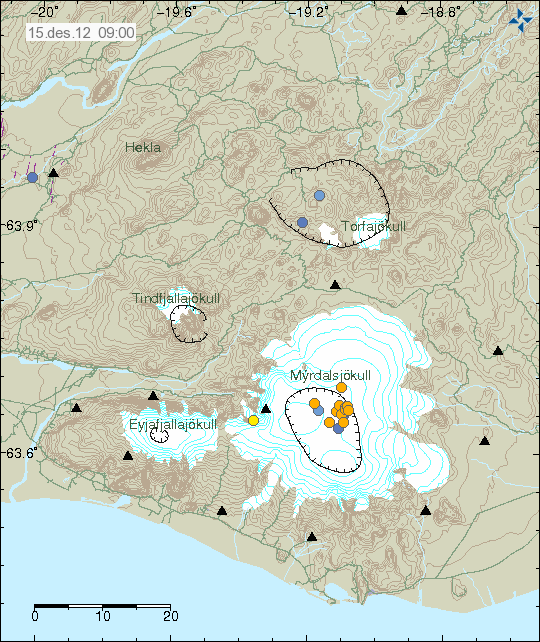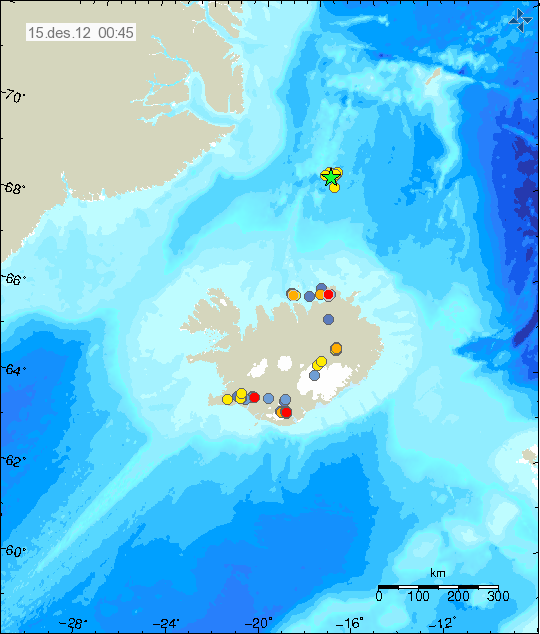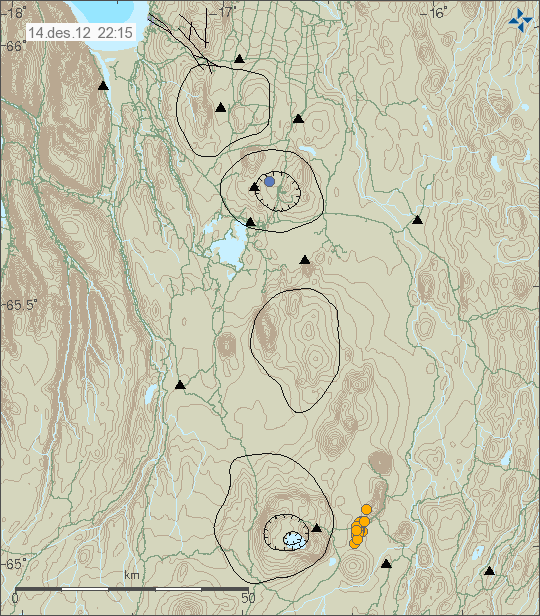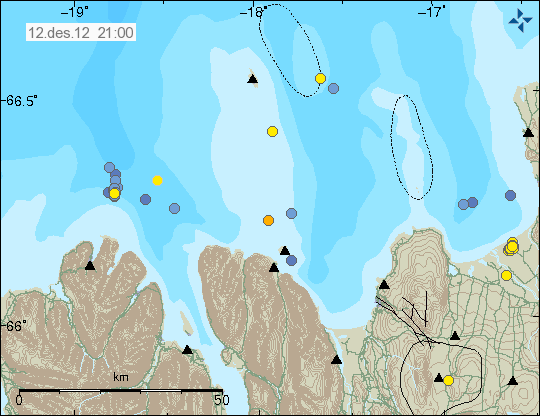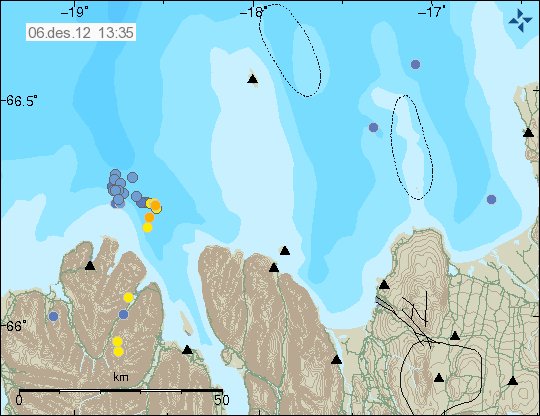During the night at 04:50 UTC there was an earthquake with the magnitude 3.8 in Bárðarbunga volcano. This appears to be a minor dike intrusions into Bárðarbunga volcano. This happens regularly in Bárðarbunga volcano. Often resulting in a lot larger earthquakes then current earthquake swarm that is taking place in Bárðarbunga volcano.

Earthquake activity in Bárðarbunga volcano. The star is the magnitude 3.8 earthquake. Copyright of this image belongs to Icelandic Meteorological Office.
It is impossible to know what is going on in Bárðarbunga volcano. But there is no risk for volcano eruption for now. Even if there is possibility of minor dike intrusion taking place in Bárðarbunga volcano at the moment. I am not expecting anything more at the moment. But more earthquakes can not be ruled out, as Bárðarbunga volcano is a earthquake active volcano.


